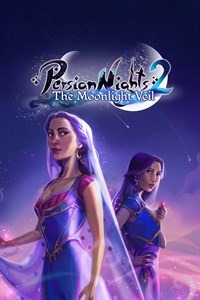Persian Nights Collection
One Thousand and One Nights (Arabic: أَلْف لَيْلَة وَلَيْلَة, Alf layla wa-layla) or the Arabian Nights, is a collection of folk tales from the Middle East. Some of the tales are set in distant lands, such as Egypt, India or even China.
Travel to the magical land of Persian Nights and save your sister from a dire fate. Feel the taste of orient in this sumptuous and beguiling hidden object adventure. The day of Mathab is coming to.
- 1,001 Nights, also known as The Thousand and One Nights or Arabian Nights, is a collection of Middle Eastern and South Asian folk tales that were originally published together during the Islamic Golden Age. The stories — from historical tales to tragic romances to comedies — were collected over many centuries by a huge range of scholars.
- Check out my Indian Nights Blanket! Check out this You-tube to see how it works! Errata: On chart 2, row 42, there is a white box where it ought to be orange. It is on the right side of the crown shaped motif. Palette has 231 yards per ball, not 213 as in pattern.
The tales became widespread in the Western world from the 18th century, and helped to shape a romanticized view of Islamic culture. Several of the tales, including Aladdin and the Magic Lamp, Ali Baba and the Forty Thieves, and the voyages of Sinbad the Sailor, have been made into films and television series.
There are multiple versions in several Middle Eastern languages and several different translations into Western languages. Though it is generally called the Arabian Nights, not all the stories are Arabian in origin; the original collection, now lost but believed to be the ancestor of all the others, was in Persian, translated to Arabic in the 10th century. Some of the tales are originally Indian and some scholars believe the whole collection originated in India. The translations are generally based on later collections in Arabic, but some include additional tales not found in the Arabic versions.
Project Gutenberg has tens of thousands of books for free, legal (copyright has expired) download, including multiple translations of the Arabian Nights.
Understand[edit]
The main frame story concerns Shahryār (from Middle Persian šahr-dār, 'holder of realm'), whom the narrator calls a 'Sasanian king' ruling in 'India and China'. Shahryār is shocked to learn that his brother's wife is unfaithful; discovering that his own wife's infidelity has been even more flagrant, he has her killed. In his bitterness and grief, he decides that all women are the same. Shahryār begins to marry a succession of virgins only to execute each one the next morning, before she has a chance to dishonor him.
Finally, the Grand Vizier's daughter Sheherezade offers herself for marriage. In the night, she begins telling him a tale. She withholds the end of the story and offers to tell it the following night. Shahryār lets her live the next day to hear the end of the story. As she tells the end, she tells Shahryār a new story, saving the end for another night. He spares her life for 1001 nights, and implicitly forever.
1001 Nights is credited to have introduced many literary tropes, such as the frame story and the cliffhanger. The tales vary widely: they include historical tales, love stories, tragedies, comedies, poems, burlesques, and various forms of erotica. Numerous stories depict jinns, ghouls, apes, sorcerers, magicians, and legendary places, which are often intermingled with real people and geography, not always rationally. Common protagonists include the historical Abbasid caliph Harun al-Rashid, his Grand Vizier, Jafar al-Barmaki, and the famous poet Abu Nuwas, despite the fact that these figures lived some 200 years after the fall of the Sassanid Empire, in which the frame tale of Sheherezade is set. Sometimes a character in Sheherezade's tale will begin telling other characters a story of his own, and that story may have another one told within it, resulting in a richly layered narrative texture.
Destinations[edit]
Many of the locations in the tales are uncertain. Also, many Middle Eastern cities try to make a claim of the 1001 Nights heritage, without any certain evidence.
Some of the locations are in Iraq and other countries which are, as of the 2010s, unsafe for visitors.
Iran[edit]
- Esfahan, an archetype of a classical Persian city
- Yazd, a desert city
Netherlands[edit]
- The Efteling theme park in North Brabant has a ride based on 1001 nights.
See also[edit]
| This travel topic about One Thousand and One Nights is an outline and needs more content. It has a template, but there is not enough information present. Please plunge forward and help it grow! |
Persian Nights Collectibles
Written by: Javeriah Farrukh
Posted on: June 10, 2015 |
A glimpse of Enchanté’s Persian themed jewellery pieces
Customized bracelets from the luxury Persian calligraphy line


Sukaina Abbas of Enchanté brought Persian royalty to the metropolis of Karachi with her unique jewellery exhibition, titled ‘Persian Nights – The Timeless Saga’, which opened here on Sunday at Gon Pacci. Designed in sterling silver, with intricate semi-precious and precious stonework, the immaculate collection featured various numbers, including delicate rings and bracelets, ethnic bridal sets and trendy earrings.
Abbas, a graduate in software engineering, mother of three, and now an entrepreneur pursuing her passion for designing jewellery, credited Persian crown jewels as the inspiration behind her collection: “I was amazed by the craftsmanship and beauty of the crown jewels of Persia, and wanted to infuse that with local designs,” she explained while talking to Youlin.
The highlight of the collection was the intricate stonework in Sapphire, Ruby, Lapis, Jade, Emerald and Kundan, cradled in the sophisticated silver and gold-plated frames. While the collection included all traditional jewellery items, it was the stonework, particularly in the Kundan bridal sets, that made each item stand out. Sukaina’s innovation with stone created a beautiful blend of modern jewellery with a regal undertone. “The Persian Nights collection caters to the contemporary Pakistani woman, who is looking for unique, sophisticated jewellery at affordable prices,” Sukaina added, “I wanted to create something that I would want to buy for myself.”
Persian Nights Pc Game
Also featured in the collection are Enchanté’s limited edition Iranian Turquoise pieces and its luxury line of Persian calligraphy pieces, ranging from rings to cufflinks. These customized pieces are meticulously designed by Persian calligraphers with great skill, and are the most exotic pieces in Enchanté’s collection.
Enchanté, an online retailer of silver jewellery, came into existence three years ago when Sukaina decided to experiment with unique cuts and to use jewellery designing as an expression of her creativity. Gradually the brand gained popularity, and has now become a favorite among women looking for exquisite jewellery within a budget. Persian Nights marks Enchanté’s fifth exhibition in Karachi, and the brand delivers its exquisite pieces in various parts of the world.
You may also like:
The Pink Riders: Breaking the Mold for Female Mobility
(December 11, 2020)
TV Drama Review: Be Adab (Disrespect), brewing a little too slowly

(December 10, 2020)
Green Dreams and Reveries - 'New Paintings' by Salman Toor at the O Art Space, Lahore
(December 09, 2020)
City of the Silk Road: The Ruins of Gaochang

(December 08, 2020)
The Forgotten Wonder of the Wah Mughal Gardens
(December 07, 2020)
The Edge of China: The Jiayuguan Fort
(December 04, 2020)
The Legacy of PNS Hangor at Pakistan Maritime Museum
(December 03, 2020)
Patiala Gharana: Music Through Generations
(December 02, 2020)
Art Review: Rahim Baloch's Silver Lining, at Satrang Gallery
(December 01, 2020)
Food Review: Al-Beirut in Lahore
(November 30, 2020 )

